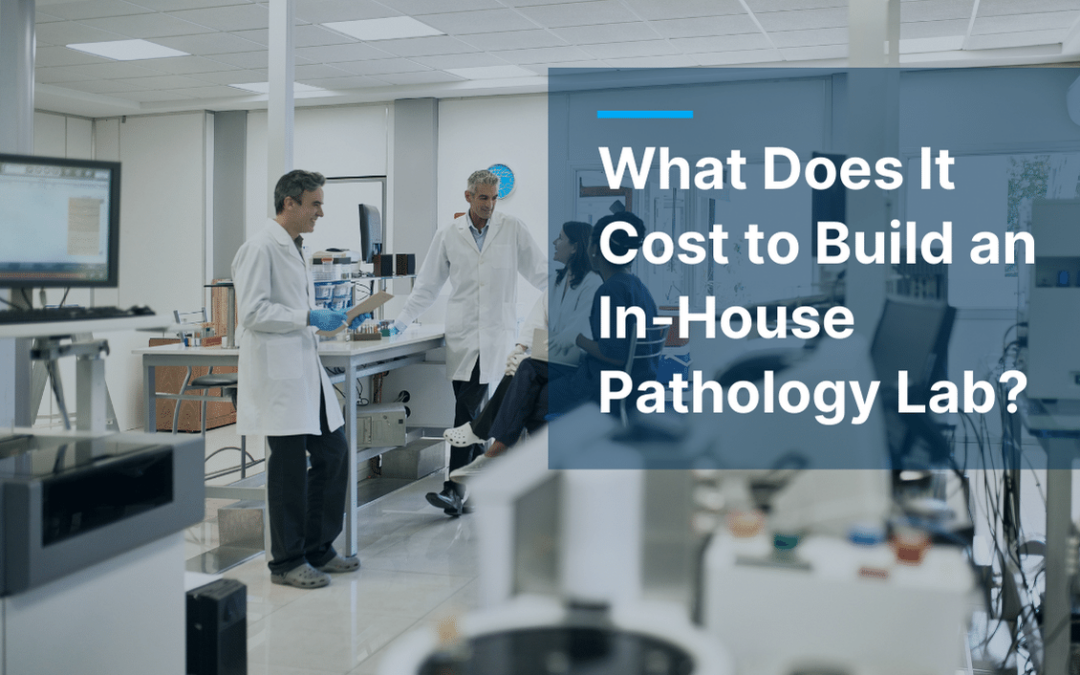Starting an in-house pathology lab, or physician office laboratory (POL), provides a number of benefits for both physicians and patients. A POL is a lab that operates within a physician’s office or clinic and offers diagnostic testing and pathology services to patients.
By having a pathology lab on-site, physicians can quickly and easily obtain test results, which can help inform their diagnoses and treatment decisions. Additionally, owning and operating a POL within your practice allows you to keep revenue lost when shipping samples out to reference laboratories, which in turn increases the value of your practice as a whole.

Rod Glose, Director of Pathology Consulting
Rod Glose, Director of Pathology Consulting for Lighthouse Lab Services, says that while some practices may look to build their own pathology laboratory to increase profitability, others may be more focused on having control over another part of the patient care process. Typically, if a lab sends out at least 4,000 to 5,000 samples annually, it makes sense to consider the benefits of keeping that testing in-house.
“If you own the pathology, it’s part of your practice,” Glose says. “You not only cut down on turnaround times, but you are able to treat the patient a little more holistically by developing a greater relationship between the pathologist and the clinician. And it’s more holistic from a business perspective, as well.”
If you’re looking to start your own in-house pathology lab, here are a few items and estimated costs you’ll want to consider upfront:
Space
One of the first questions to answer when building an in-house pathology lab is the exact location and space you’ll be working with. Glose says the exact size requirements will vary depending on specimen volume, but he typically recommends a minimum of 350 square feet to ensure there is enough room to store slides and blocks the lab will maintain.
Here are a few other items to consider:
- Location within your building: Due to the relatively large quantities of hazardous/flammable chemicals required by the lab, the first or second floor of a building is ideal. Other floors require more planning.
- Ventilation: It is critical that the ventilation plan be designed specifically for the space and use.
- Electrical: Adequate electrical power must be available.
- Fire safety measures: The lab may require fire rating and sprinklers.
- Plumbing: Access to plumbing is necessary.
Equipment
While the exact type of equipment or instrumentation required for a physician office lab will vary depending on size and the type of testing being performed, Glose says the volume of testing and the amount of automation you envision in your lab will have the largest impacts.
An Immunohistochemistry (IHC) automated stainer is one significant piece of equipment that can cost close to $100,000 if a lab has the testing volume and prefers to own that piece of the process. However, labs can consider alternatives such as reagent rental or leasing to own the equipment.
Glose says that while there are opportunities to buy used or refurbished equipment at reduced prices, any practice doing so will want to ensure they receive a detailed history of the equipment’s use. This can be best achieved through using a good quality lab equipment refurbishing company.
“No one manufacturer makes an entire product line that’s outstanding or suited well for physician office labs,” says Glose, whose team also assists clients with validating their equipment. “So, we have to use a combination of different manufacturers and put together a package of equipment that makes sense for the group.”
Personnel
A significant portion of any lab’s recurring monthly expenses will be dedicated to hiring qualified personnel and histology technicians to staff your facility. Glose says he typically deploys a formula to determine staffing needs for in-house pathology labs. Hiring is often cited as a challenge in the histology world, but through the use of good hiring techniques employed by recruiting firms like Lighthouse, in addition to staffing databases, this is typically not an issue.
Supplies
Supplies are another area that will vary greatly depending on the size and type of testing being performed in your pathology lab. However, most labs will require basic supplies such as reagents, quality control material, and miscellaneous materials such as slides, cassettes, and stains.
- RELATED ARTICLE: How Much Does It Cost to Build a Clinical Laboratory?
Glose says his team typically estimates the lab supplies for a new lab using a formula which varies depending on stain and IHC volumes.
“A small lab not performing IHCs may only spend $20,000-$25,000 a year on supplies,” Glose estimates. “But bigger labs performing those tests may need to set aside about $150,000-$200,000 annually.”
Compliance/Accreditation
Prior to beginning testing, new labs will first need to navigate the oftentimes complex state and federal regulatory landscape, including filing CLIA paperwork to ensure all necessary certificates of compliance are secured. As part of this process, labs must hire a qualified Lab Director to oversee operations, enroll with other necessary agencies, provide ownership disclosures and validation plans, and file a CMS 116 application.
Glose points out that another route some labs pursue instead of obtaining a CLIA certificate of compliance is to seek a certificate of accreditation from the College of American Pathology (CAP).
Billing and Insurance
The reimbursement landscape in pathology is often not considered until after a laboratory is open. Understanding this up front is critical for the proper planning of your project. While histology POLs only utilize a handful of CPT codes, reimbursement can often be a challenge. Lighthouse’s RCM and Payer Strategy Solutions divisions help groups with credentialing and payer contracting that may need to be factored in for some groups with challenging payers.
Total cost and other considerations
In total, Glose estimates most physician office labs will cost about $350,000-$550,000, made up primarily with the cost of construction, lab equipment, and consulting fees.
While that may sound like a significant upfront expense for small- and mid-sized practices, Glose says the return on investment (ROI) for building an in-house pathology lab is typically realized within a relatively short time. And with an estimated build time of six months, most practices will be able to recoup their costs while enhancing their patient care within a reasonable timeframe.
If you’re interested in expanding your practice with a physician office lab, or would like to learn more about the process, feel free to reach out to us for a free consultation.
